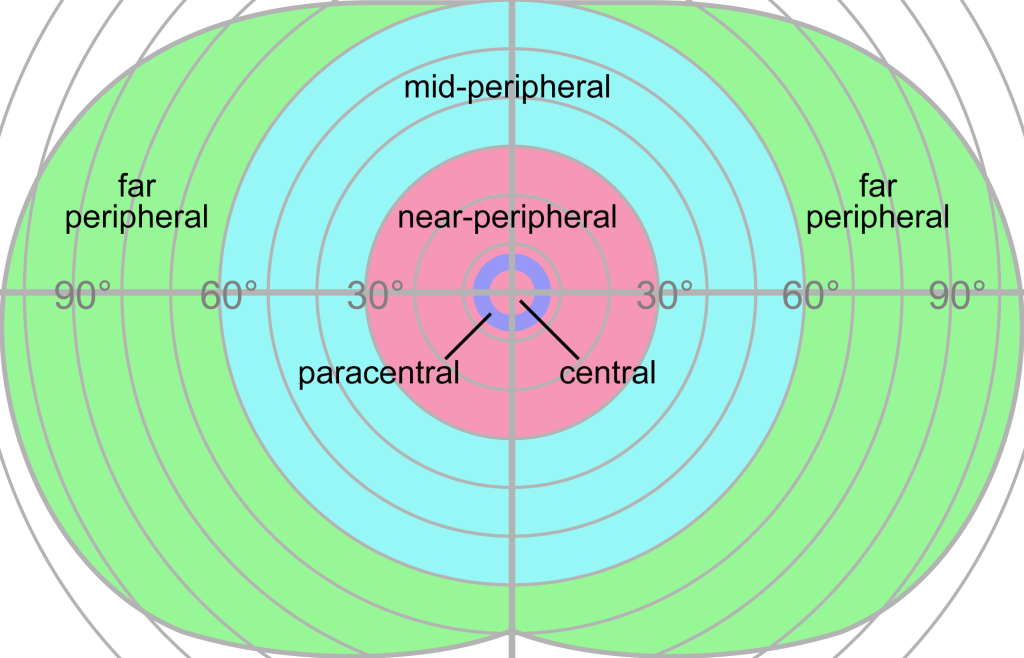Eye Injuries
Published (updated: ).
Eye/Orbital

There are many ways that vision can be described, measured, or accessed. fundamentally there are two types of vision, central and peripheral. Central vision is what a person used to look at things directly and see details. Peripheral vision in contrast is the rest of the visual field. Areas that are visible, but not looking at directly are considered peripheral vision.
The following injuries are commonly encountered by medics:
- Abrasions specifically to the cornea
- Foreign bodies to the eye
- Lacerations specifically to the eyelid
- Burns to the cornea from acid, Alkali, ultraviolet apply
- Blast injuries
- Avulsions
Management

Management of an eye injury could be a component of a focused history and physical exam. However if the mechanism of injury is significant, the medics will assess and manage an eye injury during the secondary survey. Regardless of when and how the eye injury was assessed, the medics will need to ensure the following priorities are met:
- Injuries to the eye can bleed profusely. The application of direct pressure it still required, however applying pressure to a damaged eye can cause more damage.
- Positioning a patient with an eye injury can be extremely challenging. A patient with an eye injury will prefer to sit up in a Fowler’s position as opposed to being immobilized in a supine position. If the medics must position a patient in a supine position they should plan to roll the patient into a lateral recumbent position.
- When bandaging and eye injury, the medics should bandage both eyes even if only one eye is injured. Bandaging both eyes will ensure that the patient’s eye movements will not contribute to the complexity of dressing an eye injury. Dressings applied to eye injuries need to be moist. Applying a dry dressing to an injured eye may result in the dressing sticking to the wound.
- Impaled objects to the eye should be stabilized in order to keep them from moving. Removing an impaled object will generally result in more damage and unnecessary bleeding problems. Impaled objects should be stabilized and both eyes bandaged to minimize eye movement.
- Acids are compounds with a low pH. alkaline are compounds with a high pH. either compound can cause significant damage to the eye if it were to come in contact. Generally accepted as treatment is flushing the eyes with water. Foreign bodies to the eyes are objects from the environment that get trapped on the surface of the cornea. Foreign bodies to the eyes are also treated by flushing with copious amounts of water. Ambulances carry sterile water and saline for the purpose of flushing wounds and eyes. Flushing the eyes is typically carried out for at least 20 minutes.
Assessment of eye injuries
The medics will assess the eyes either during the focused history and physical exam or during the secondary survey. When assessing the eyes, the medics should inquire about eye clarity of the unaffected eye. Both eyes should be pointing in the same direction and working in tandem, that is to say moving together.
To assess the eyes, the medics should first assess the facial bones around the eyes (orbits). Next the medics should see if the patient can follow their fingers up, down, and lateral . The Medics can assess the function of the eyes by seeing if the patient can read regular print. Finally the Medics should see if there’s any blood visible in the iris area.
The primary concern during the management of facial and eye injuries is the maintenance of a patent airway. Nasopharyngeal airways are contraindicated in the presence of a facial injury. Facial injuries may require frequent suctioning. Foreign bodies or chemicals to the eyes can be treated with copious amounts of water.
When treating an eye injury it is important to remember to patch both eyes. Since the eyes move in tandem stabilizing one eye is impossible without covering the other eye. impaled objects to the I should be stabilized. Most patients will prefer to be sitting up when they have a face or an eye injury. Bandaging face or eye injuries can be difficult. Medics may find it easier to simply apply direct pressure or manually stabilize a facial eye injury.
